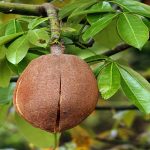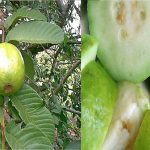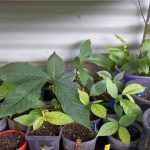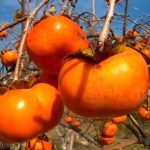Description
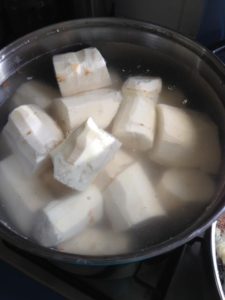
Manihot esculenta, commonly called cassava (/kəˈsɑːvə/), manioc, yuca, macaxeira, mandioca, aipim, and agbeli, is a woody shrub native to South America of the spurge family, Euphorbiaceae. Although a perennial plant, cassava is extensively cultivated as an annual crop in tropical and subtropical regions for its edible starchy tuberous root, a major source of carbohydrates. Though it is often called yuca in parts of Spanish America and in the United States, it is not related to yucca, a shrub in the family Asparagaceae. Cassava is predominantly consumed in boiled form, but substantial quantities are used to extract cassava starch, called tapioca, which is used for food, animal feed, and industrial purposes. The Brazilian farinha, and the related garri of West Africa, is an edible coarse flour obtained by grating cassava roots, pressing moisture off the obtained grated pulp, and finally drying it (and roasting in the case of farinha).
This is particularly nice variety – Easy to grow..
Contact me for bulk orders.
Cassava is the third-largest source of food carbohydrates in the tropics, after rice and maize. Cassava is a major staple food in the developing world, providing a basic diet for over half a billion people. It is one of the most drought-tolerant crops, capable of growing on marginal soils. Nigeria is the world’s largest producer of cassava, while Thailand is the largest exporter of cassava starch.

Cassava is classified as either sweet or bitter. Like other roots and tubers, both bitter and sweet varieties of cassava contain antinutritional factors and toxins, with the bitter varieties containing much larger amounts. It must be properly prepared before consumption, as improper preparation of cassava can leave enough residual cyanide to cause acute cyanide intoxication, goiters, and even ataxia, partial paralysis, or death. The more toxic varieties of cassava are a fall-back resource (a “food security crop”) in times of famine or food insecurity in some places. Farmers often prefer the bitter varieties because they deter pests, animals, and thieves.
The cassava root is long and tapered, with a firm, homogeneous flesh encased in a detachable rind, about 1 mm thick, rough and brown on the outside. Commercial cultivars can be 5 to 10 centimetres (2 to 4 inches) in diameter at the top, and around 15 to 30 cm (6 to 12 in) long. A woody vascular bundle runs along the root’s axis. The flesh can be chalk-white or yellowish. Cassava roots are very rich in starch and contain small amounts of calcium (16 mg/100 g), phosphorus (27 mg/100 g), and vitamin C (20.6 mg/100 g). However, they are poor in protein and other nutrients. In contrast, cassava leaves are a good source of protein (rich in lysine), but deficient in the amino acid methionine and possibly tryptophan.
Wild populations of M. esculenta subspecies flabellifolia, shown to be the progenitor of domesticated cassava, are centered in west-central Brazil, where it was likely first domesticated no more than 10,000 years BP. Forms of the modern domesticated species can also be found growing in the wild in the south of Brazil. By 4,600 BC, manioc (cassava) pollen appears in the Gulf of Mexico lowlands, at the San Andrés archaeological site. The oldest direct evidence of cassava cultivation comes from a 1,400-year-old Maya site, Joya de Cerén, in El Salvador. With its high food potential, it had become a staple food of the native populations of northern South America, southern Mesoamerica, and the Taino people in the Caribbean islands, who grew it using a high yielding form of shifting agriculture by the time of European contact in 1492. Cassava was a staple food of pre-Columbian peoples in the Americas and is often portrayed in indigenous art. The Moche people often depicted yuca/cassava in their ceramics
Cassava is sometimes described as the “bread of the tropics”
Cassava-based dishes are widely consumed wherever the plant is cultivated; some have regional, national, or ethnic importance. Cassava must be cooked properly to detoxify it before it is eaten. Boiling will do.
Cassava can be cooked in many ways. The root of the sweet variety has a delicate flavor and can replace potatoes. It is used in cholent in some households. It can be made into a flour that is used in breads, cakes and cookies. In Brazil, detoxified manioc is ground and cooked to a dry, often hard or crunchy meal known as farofa used as a condiment, toasted in butter, or eaten alone as a side dish.
Alcoholic beverages made from cassava include cauim and tiquira.
Manihot esculenta, Cassava – tapioca cutting x 3 … 250mm long – x 30mm wide

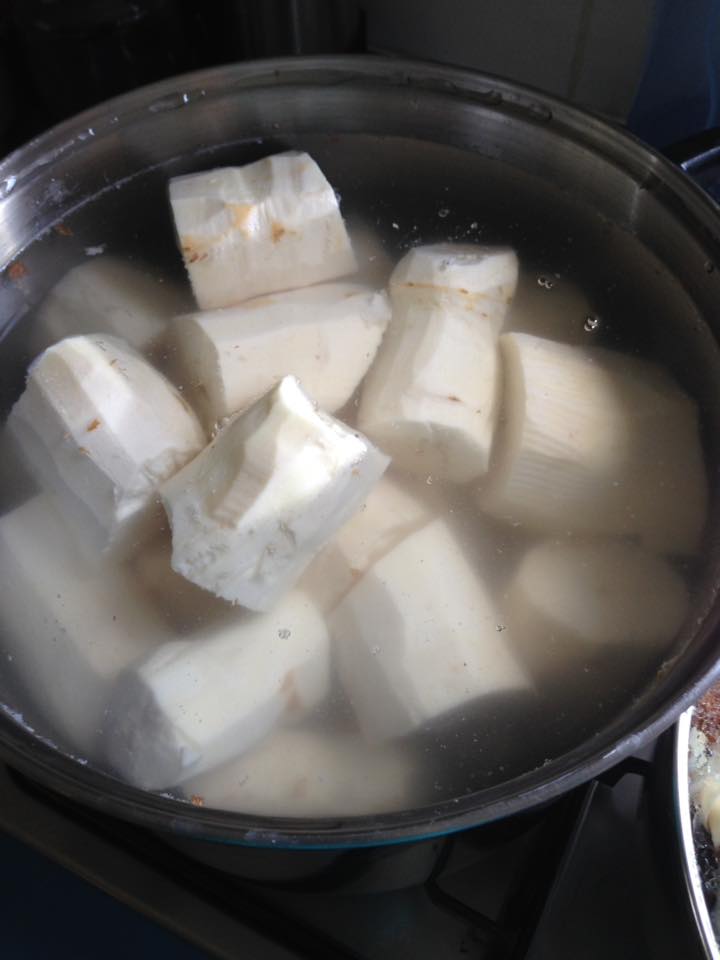
 or 4 payments of
or 4 payments of 